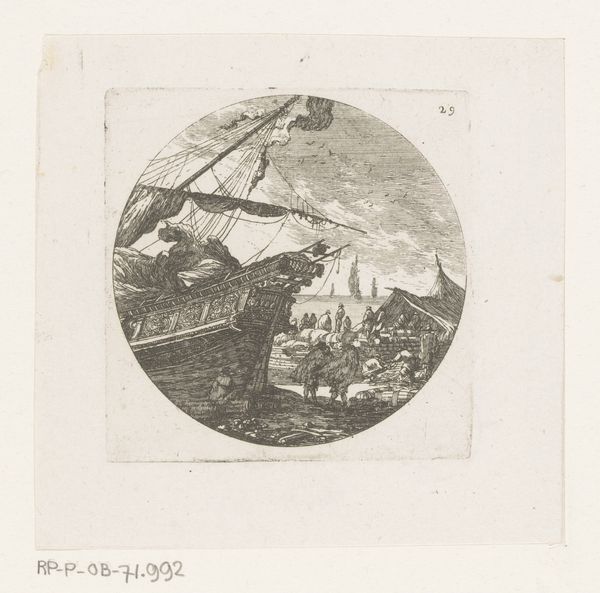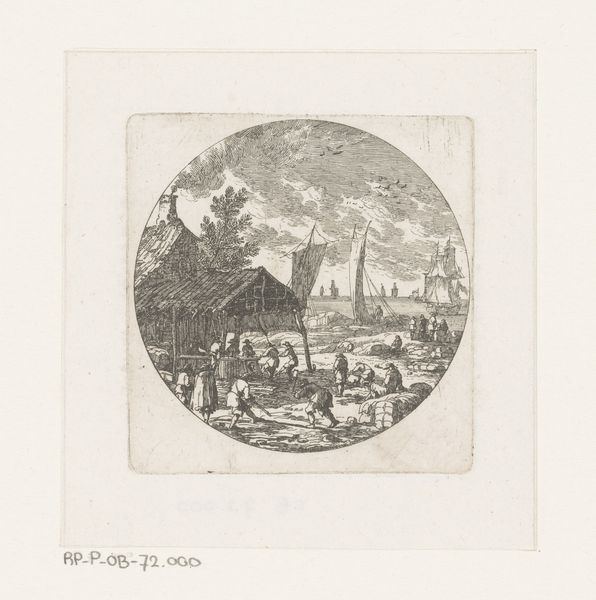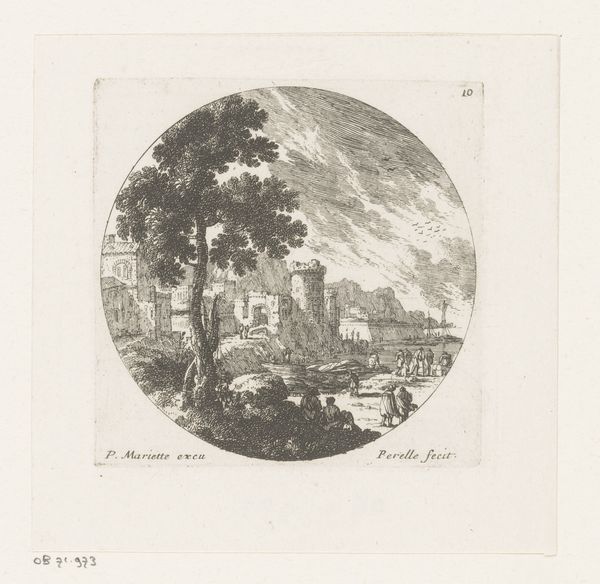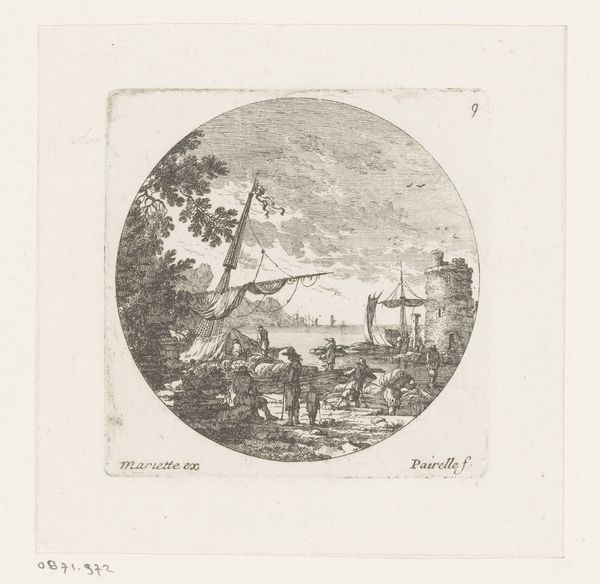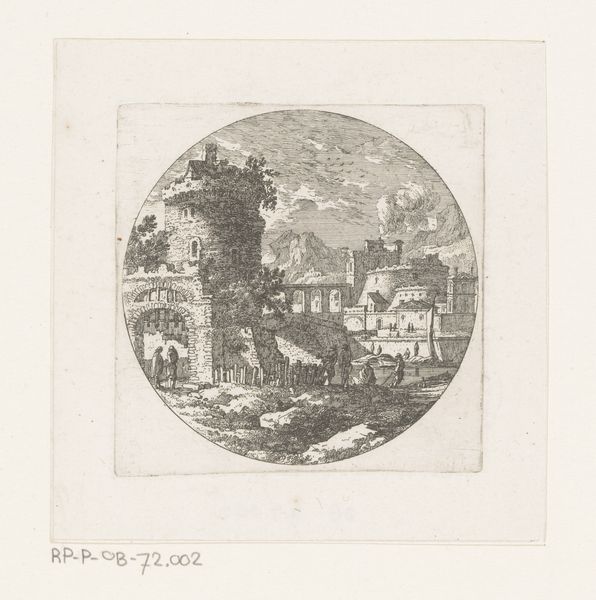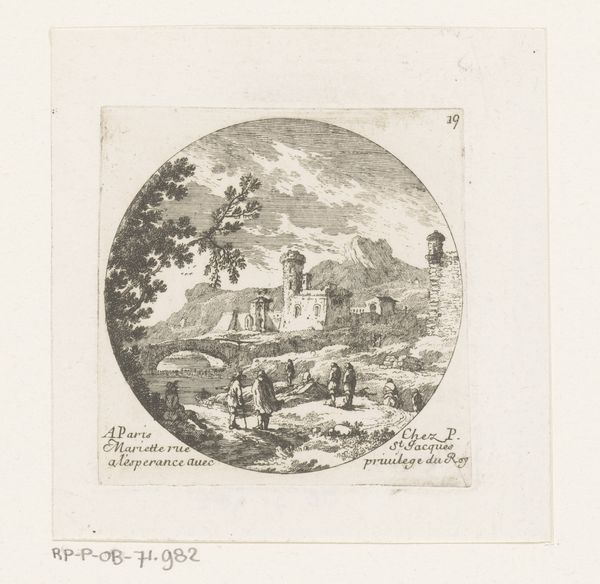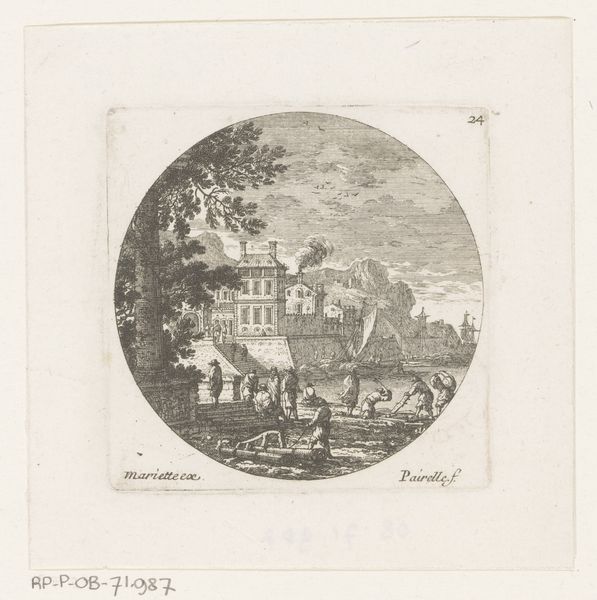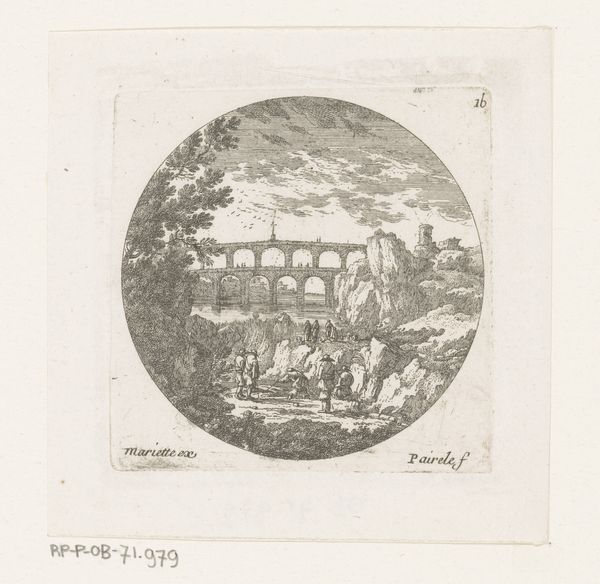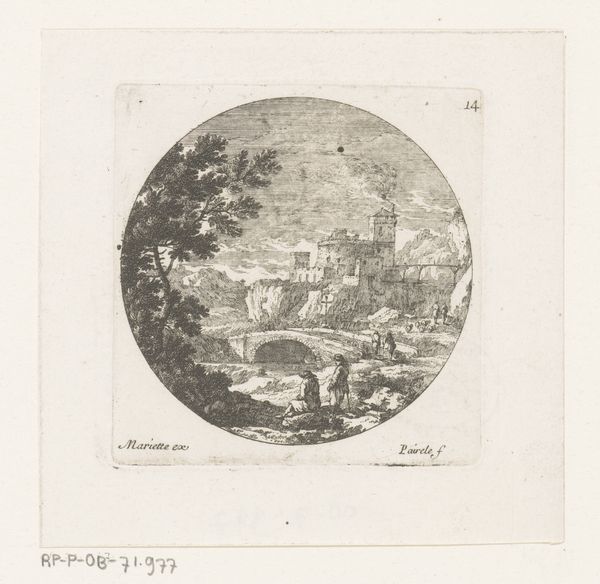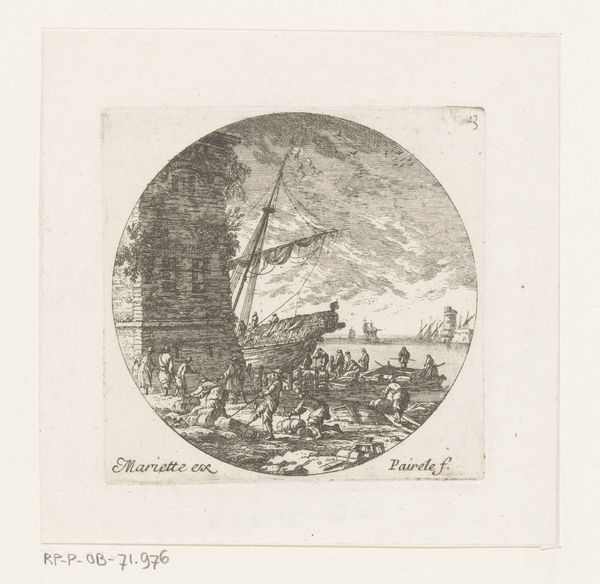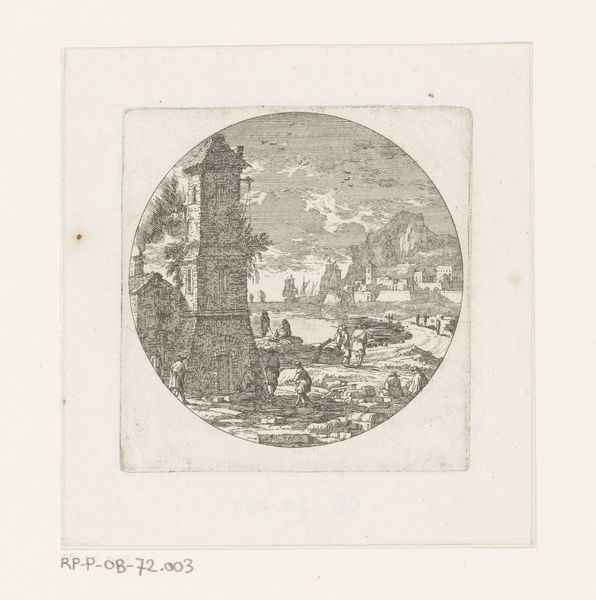
print, etching, engraving
#
baroque
# print
#
etching
#
old engraving style
#
landscape
#
white palette
#
cityscape
#
engraving
Dimensions: height 89 mm, width 84 mm
Copyright: Rijks Museum: Open Domain
Curator: Looking at this print, I’m struck by its intimate scale. It's named "Vestingstad met toren aan water," which translates to "Fortified City with Tower on Water." It’s an etching, a type of engraving, crafted sometime between 1613 and 1695. Editor: It has this almost dreamlike quality. The wispy lines of the etching create an ethereal atmosphere, as if we’re peering into a memory, and yet it also shows every-day work taking place. Curator: Precisely. What's intriguing to me is how prints like these served a crucial public function in the Baroque era. They democratized access to landscapes and cityscapes, disseminating images and information about faraway places and current infrastructures, especially amongst those who might never visit in person. It's almost an early form of photojournalism. Editor: The tower definitely captures my eye. Towers always represent something. Here, it feels like a protective figure, guarding the harbor. Its prominence tells me that this town’s ability to protect itself by being close to the water held importance. It has become an architectural manifestation of civic identity. The smoke emerging from its top is like the town breathing! Curator: That’s an insightful way to put it. Fortifications, historically, weren't just physical structures, but powerful visual statements, of a ruler’s power. Prints like these not only captured reality but also subtly reinforced power structures by showcasing such infrastructure and organization. Who was the artist you may wonder, because I did? Well, it's from Nicolas Perelle. Editor: I like the bustling port life shown in the foreground, which is made visible by this ‘breathing’ architectural structure. The visual storytelling—the ordinary people, the boats, and even the landscape behind it all—is incredible. Perelle created almost a shared experience through easily replicated images, to connect on what it meant to exist near one of the earlier examples of successful human modification of water and stone. I hadn’t considered that before! Curator: It’s remarkable to consider this small etching and realize its profound effect, culturally, for image consumption by ordinary people who needed visual representations. I’ve seen the implications across Europe and elsewhere in the world! Editor: Exactly! Even now it offers a peek into the 17th century. The symbol of the protective tower to be copied again and again, just like the prints themselves.
Comments
No comments
Be the first to comment and join the conversation on the ultimate creative platform.

